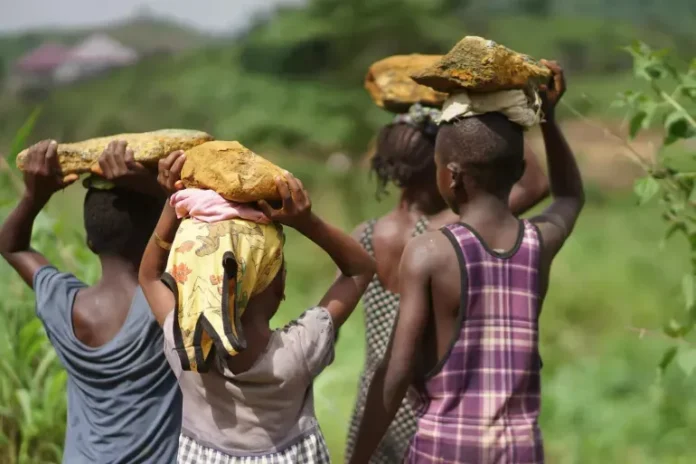Despite significant strides over the past two decades, child labour remains a global crisis, with an estimated 138 million children engaged in work in 2024, including 54 million in hazardous conditions, according to a new report by the International Labour Organization (ILO) and UNICEF.
Released ahead of the World Day Against Child Labour and the International Day of Play, the report, “Child Labour: Global Estimates 2024, Trends and the Road Forward,” highlights a nearly 50% reduction in child labour since 2000. However, it also reveals the world is far from meeting its goal of eliminating child labour by 2025.
“The findings offer hope, but we must not ignore the fact that millions of children are still being robbed of their childhood,” said ILO Director-General Gilbert F. Houngbo. “Children belong in classrooms, not in fields or factories.”
The report shows a net reduction of over 20 million children since 2020, reversing an earlier rise seen between 2016 and 2020. Asia and the Pacific led in progress, halving their child labour rate from 6% to 3%. Latin America and the Caribbean maintained steady prevalence levels, but reduced absolute numbers by a million.
Sub-Saharan Africa remains the most affected region, with around 87 million children in child labour—nearly two-thirds of the global total. Though the regional prevalence dipped slightly from 24% to 22%, population growth and limited resources have kept absolute numbers stagnant.
Child labour is most prevalent in agriculture (61%), followed by services (27%) and industry (13%). Boys are more likely to be engaged in labour, though when unpaid domestic chores exceeding 21 hours per week are included, girls are disproportionately affected.
UNICEF Executive Director Catherine Russell warned that global funding cuts threaten to reverse hard-earned gains. “We must recommit to legal protections, quality education, and decent work for families. Progress is possible, but only with sustained investment and political will,” she said.
To accelerate progress, UNICEF and the ILO urge governments to bolster social protection systems, expand access to education, ensure decent work for adults, enforce labour laws, and strengthen child protection efforts.
With the current rate of progress, global child labour would take decades to eliminate. To meet even a revised goal within the next five years, progress would need to accelerate more than elevenfold.
Written By Rodney Mbua



















